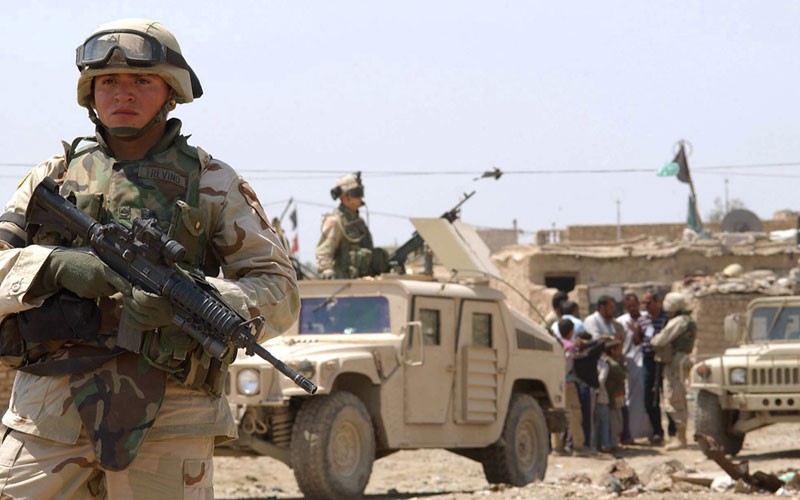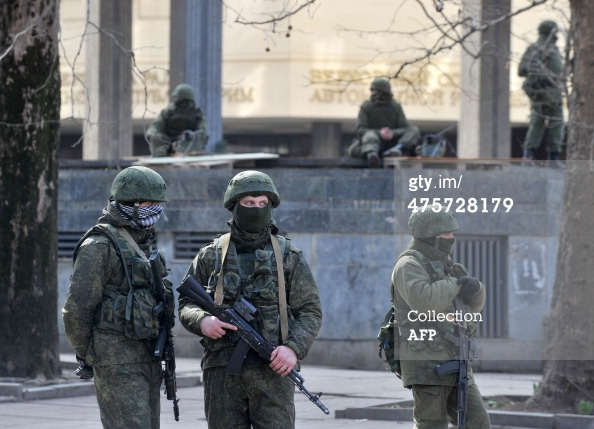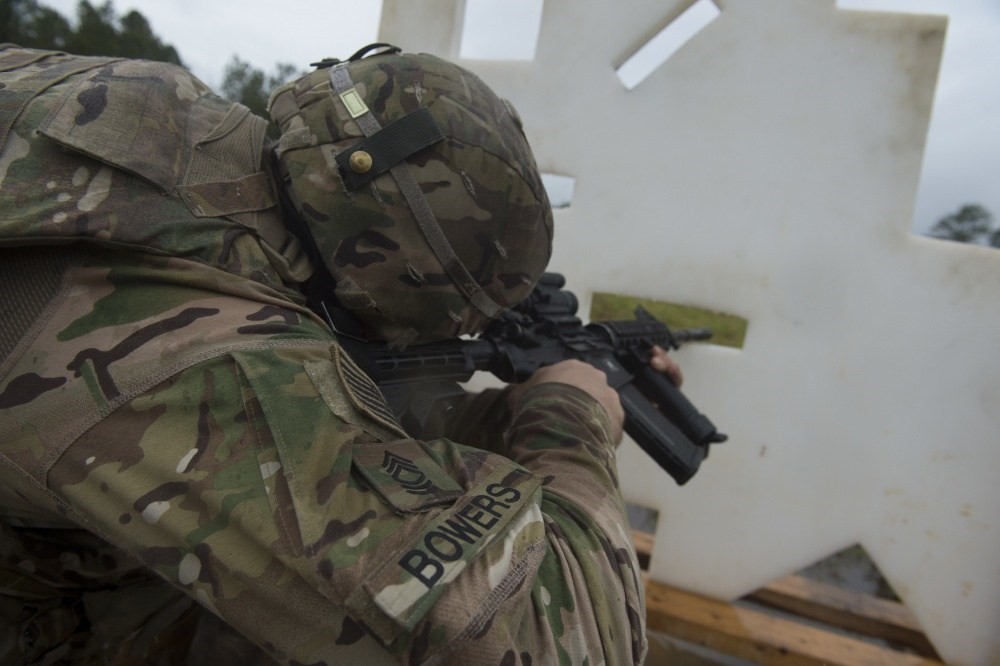Reconsidering the Individual Weapon Optic
Part 1: The Reflex Sight
The individual weapon optic has seen considerable evolution in the 21st century. Optics are one of the areas in small arms that have seen consistent and considerable innovation, where most other aspects of firearm technology have stagnated or remained relatively constant.
Most western militaries use a weapon optic of some sort of another on the individual soldier’s rifle. A wide variety of optics can be seen in the field, but they largely can be classified into three types: non-magnified optics, usually involving a red dot or similar reticle; magnified optics, of both the variable and fixed zoom variety; and special-purpose optics that operate in the night vision or thermal spectrum.
The Reflex Sight
The reflex sight or red dot is perhaps the most simple of this class of optics. While some manufacturers may insist that their no-magnification projected-reticle sights are not reflex sights, this article will refer to them as such for the sake of simplicity. Reflex sights have existed throughout the 20th century, with early sights such as the Armson OEG seeing use in special raids during the Vietnam War. But the technology only reached maturity in the 1990s, when electronics and materials technology advanced enough to create reflex sights light and durable enough to function reliably on an infantry rifle.
The US military was one of the first militaries to field these sights in numbers. Aimpoint 3000s and 5000s were used in Operation Desert Storm and Gothic Serpent by special units. Their use exploded in the post-9/11 era when the US Army adopted the Aimpoint CompM2 reflex sight, under the designation M68 Close Combat Optic (CCO). The US Army continues to procure reflex sights: they ordered 30,000 Aimpoint CompM4s sights in 2017. These newer sights are also designated M68 CCO.

A soldier holds a M4 Carbine fitted with a M68 CCO reflex sight, 2004. Source: US Army.
Many other militaries have followed. Sweden, France and Norway also use Aimpoints as standard issue optics. Reflex sights are very common in the Israel Defense Forces[1]. While the majority of the conscripted Russian military still uses ironsights, more elite contract troops have been seen using reflex sights during the annexation of Crimea and in Syria[2].

Russian “Little Green Men” with 1P63 Obzor sights in Crimea, 2014. Source: Getty
The primary advantage of a reflex sight is it simplifies the process of aiming. To aim with iron sights, a soldier must align the front sight, the rear sight, and the target. This process involves transitioning between three focal planes, with the eye first focusing on the target, then focusing on the front and rear sights to align them, then returning focus to the front sight only to place it on the target.
To aim at a target with a reflex sight, a soldier only needs to focus on the target while aligning the reticle with it. There is no need to transition between multiple focal planes, the soldier can stay focused on the target’s focal plane throughout the entire process.
The easier aiming process means that reflex sights make aiming easier and faster for most soldiers and eliminates inaccuracy that could result from improper alignment of front and rear sights.
Reflex sights also makes shooting from awkward positions easier. Modern tactical and urban combat training sometimes involves soldiers shooting from around barricades or switching the shooting shoulder to present a smaller profile to the enemy. Reflex sights are far easier to shoot with from a non-dominant eye or from odd positions, such as when wearing a protective mask or when shooting through a firing port.

A soldier utilizes a M68 CCO to engage targets through a narrow slit. Source: Primary and Secondary
There are limitations to this technology of course. The most common limitation is the power source used to project the reticle into the sight. Some reflex sights like the Israeli Meprolight M21 and Russian 1P63 Obzor use a combination of a tritium lamp and natural gathered light to project a reticle. These sights can suffer from “washout” when shooting from a dark area to a bright area due to the amount of light being gathered being insufficient to illuminate the reticle with enough contrast.
Other common sights like the Aimpoint and EOTech use battery power. Battery powered sights are generally considered to be immune to washout since the user can manually adjust the brightness to be suitable for the surrounding environment. While the Aimpoint is known for its long battery life, batteries for sights are yet another logistics item which must be taken care of for the individual soldier and placed in the supply chain.
Another issue that complicates the employment of reflex sights is parallax. Parallax is the apparent change in position of an object when the viewing angle changes, due to the shift in the background an object is viewed against. Some reflex sights are advertised online as being “parallax free”[3]: the reticle should maintain point of aim despite the movement of the soldier’s head relative to the sight. But in reality this only applies under certain circumstances. A variety of factors may affect how much parallax occurs with a reflex optic. Distance to the target generally reduces or nullifies the effect; the M68 CCO is known to be ?ssl=1″>parallax-free past 50 meters. Cheaper or older generation sights may have more issues with parallax, and parallax generally intensifies with the more off-center one views the sight from.
Good for Close Combat only?
Despite the advantages of reflex sight, one of the biggest criticisms of the reflex sights is the accusation that they not suitable for fighting at extended ranges. A controversial yet respected expert, the late Jim Schatz condemns the sights as limiting the effective range of US Troops in Afghanistan in a piece for Small Arms Defense Journal.
“These enemy gunners rain .30 caliber projectiles from 800 meters and beyond upon nine of the ten squad members who cannot hope to respond with accurate, effective fire as they are armed with 5.56mm weapons with their maximum effective range of 500 meters tops, and far less with the commonly issued short-range red dot reflex sights.”
A paper from 2009 about increasing small arms lethality in Afghanistan shares this conclusion, stating that an M68 CCO, even with magnifier, is an optimal solution for when engagement ranges are not expected to exceed 300 meters.
So why might these experts insist that reflex sights are incapable of fighting at range? One line of reasoning is that the dot of a reflex sight is too big at range, it obscures the target. While early M68s, Aimpoint CompM2s, had a 4 MOA dot, that could be considered too large for accurate distance shooting, later M68s (Aimpoint CompM4s) use a 2 MOA dot, which gives a more fine point of aim. This line of criticism falls flat when one compares reflex sights to iron sights, which are considered to be capable of engaging targets out to 500 meters or more. The front post of a M16 rifle is 11 MOA wide, a far more coarse point of aim compared to those provided by reflex sights.
Another line of criticism is that reflex sights are not adjustable for range. Most iron sights on infantry rifles include a way to adjust for the range of the target and most reflex sights do not. A shooter using a reflex sight to engage targets at ranges beyond the battlesight zero of the sight would have to attempt to land hits with “holdovers”. Holdovers involve placing the reticle above the target, rather than directly at it to compensate for drop. The technique is generally considered to be less precise than dialing in a range with an adjustable sight.
Recent tactical training suggests that this is not as big of a limitation as it may seem. Instructors have proven that reflex sights are capable of shooting out to 600 yards with a 4 MOA reticle using holdover techniques. Newer reflex sights have additional markings in the reticle which provide reference points to use when engaging targets at distance.[4]
Who should get Reflex Sights?
So does that mean that reflex sights should be standard on all infantry rifles? Not so fast.
Magnified optics have made significant advances in recent years, which will be talked about in the next article. Some are able of going down to 1x magnification, giving them similar capabilities to reflex sights. Magnified optics hold significant advantages over a reflex sight. They provide increased observation capability, the ability to see your own hits, and are lighter than a reflex sight with a magnifier. But these magnified optics are often more complex to use and train on compared to a reflex sights, and often come at a higher price tag. They are not as usable from as wide of a variety of head positions.
Meanwhile, reflex sights are getting smaller, lighter and cheaper. The lightest reflex sights are nearing the weight of a pair of traditional ironsights while taking up much less room, and some sights are cheap enough to be mounted on disposable rocket launchers.
All of this suggests that while reflex sights might not be the “best” solution for an optic for all infantry rifles, they are a good minimum standard. For a military that can afford it, there is a compelling case to completely replace the use of iron sights with reflex sights as a primary sighting device. Ironsights may still have their place in teaching the fundamentals of marksmanship and as backup sights[5], but there’s little reason to keep them around for usage in combat with all of the benefits reflex sights give in speed and accuracy.
The author would like to thank Matthew Moss (@historicfirearm) for feedback
Notes:
[1] The IDF uses multiple reflex sights, all made by Meprolight. The first was the Meprolight M21, which has largely been replaced by the battery powered Meprolight M5. Elite units are known to use foreign optics or the Meprolight MOR Optic/Laser device.
[2] Russian state security and military forces use a large variety of red dots. The 1P63 has largely fallen out of favor since 2014, with the 1P87 red dot being the most recent approved by GRAU. Other units favor American EOTech and Israeli Meprolight M21 sights.
[3] While Aimpoint sights are advertised online and in consumer manuals as being parallax-free, in meetings with law enforcement and military professionals, Aimpoint has admitted that their sights experience parallax within a certain range.
[4] Some reflex sights like the Vortex UH-1 also provide additional reference points showing point of aim at close distances
[5] Some experts insist that backup iron sights are not necessary, but this usually applies to situations where the primary optic is magnified and a secondary reflex sight exists as a backup optic.

